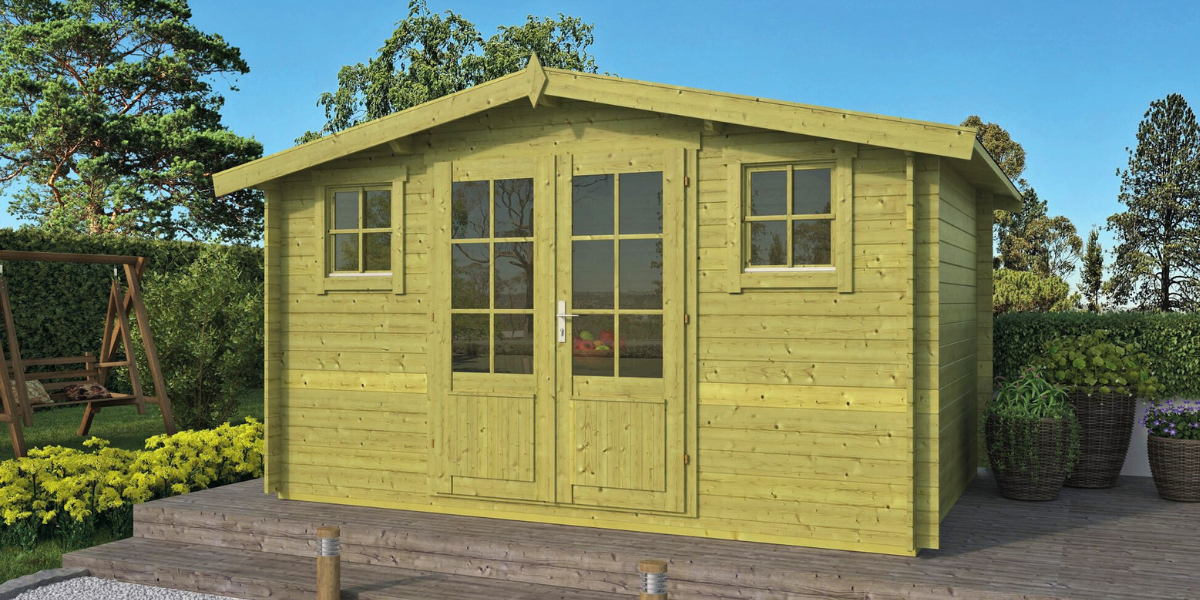
The garden industry uses these two terms a lot. Similarly, timber often describes itself as ‘tanalised’ or ‘pressure treated’. Options are given with our log cabins for them to be tanalised, others give them options of pressure treatment.
Terms
The two terms used are describing exactly the same timber treatment:
- Tanalised is actually a trademark, as is ‘Tanalith E’ which you will see sometimes. These brands have been around since the 1940’s.
- Pressure treatment is the process carried out using ‘Tanalith E’ or similar.
Process
The treatment process is carried out by placing the timber in a big tank. The door is shut and a vacuum is created inside it. Then the pressure treatment fluid is allowed to enter and is forced in the wood under the pressure. It penetrates to a depth of a few millimeters.
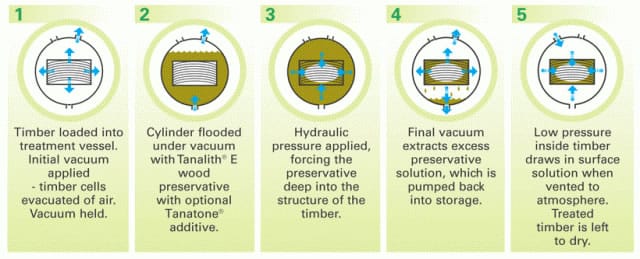
Ingredients
The main ingredient is copper with other chemicals added. Copper is excellent for protection against rot and insects. The other chemicals (Biocides) protect against other rot that the copper can’t such as ‘brown rot fungi’. These substances are not harmful at all and can be used around animals and children. Fish may be sensitive to it.
Rot Proofing of Timber
It does exactly what it says and protects the timber from rot really well, internally they say about 60 years and externally about 30 years against any form of rot. It’s pretty good stuff!
Limitations with Log Cabins
For the treatment of rot there is no real limitations, it works and works really well. The main problem with pressure treatment of our log cabins is:
- It is NOT a weatherproof treatment
You can of course not bother treating it, the cabin is not going to rot, well, not for thirty years or so but because it is not a weatherproof treatment you can expect the logs to absorb water which will result in rings and marks just like your coffee table at home with a hot mug of hot chocolate.
- It will discolour, it fades to a honey brown and eventually to a silvery grey.
Overtime it will discolour. We can pressure treat/tanalise your log cabin in green or brown but the same appearance will result. Normally over about five years.
Green Pressure Treatment
Brown Tanalised Pressure Treatment
There isn’t a great deal between them but both will end up looking the same in a few years.
- All of the wood comes treated.
And this may be a problem for you. When the logs are put into the vacuum tank there is no way to cover one side, all of it gets treated so what you see on the outside is what you see on the inside.
Life Expectancy
You might be asking what the results are for all that extra effort…
In general, pressure-treated timber is designed to resist decay and insect damage, making it more durable than untreated wood. However, it’s not immune to eventual decay over time, especially in certain conditions.
As a good rule of thumb, this type of timber has a typical lifespan of 15-20 as opposed to the usual 10. However, regular treatment can prolong your cabin’s lifespan significantly. Read more in our Treatment Advice Blog.
Summary
If Holland read what I’m about to say I may well get ‘questioned’ on it, but, I really hate pressure treated log cabins. I try and steer my customers away from it.
In my mind as it’s not weather proofed you will still have to give your cabin a proper treatment, preferably with something expensive so you rarely have to repeat it. If you want it to stay looking good you have to treat it.
Most people love the bright airiness of the cabin, do you really want to be staring at green or brown walls and ceiling, we go out of our way to source white wood over red wood so you have exactly that, an almost white interior, to spoil it with tanalisation just isn’t on really.
However, with that being said, other customers I will positively encourage such as this one:
Now here is a prime example when tanalisation / pressure treatment is excellent, it has a damp car stuck in it, it’s open to the elements internally. Rot treatment makes sense! Here’s another one when I strongly recommend it:
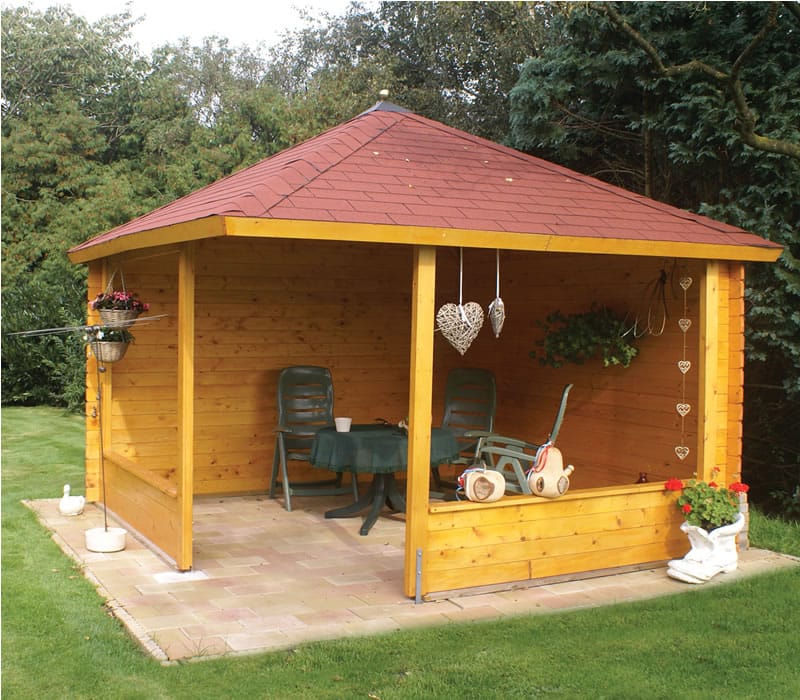
Another prime example, I’d suggest to this customer to pressure treat the log cabin. It’s constantly open to the elements internally and externally. It makes sense.
All my other cabins, hmm, I don’t think it’s necessary, you’ve got to treat it anyway so why not put the money you would have spent on tanalisation into your treatment such as Sadolin, Sikkens or our excellent range of log cabin Paints and Log Cabin Stains designed for smooth planed pine wall logs.
Overall, I think it’s a bit like marmite, love it or hate it ….. up to you!






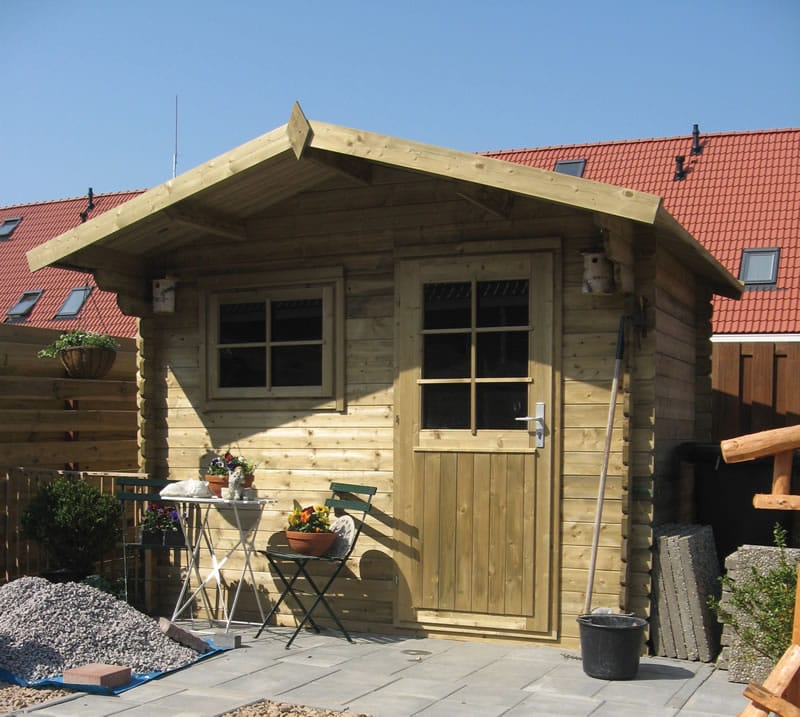
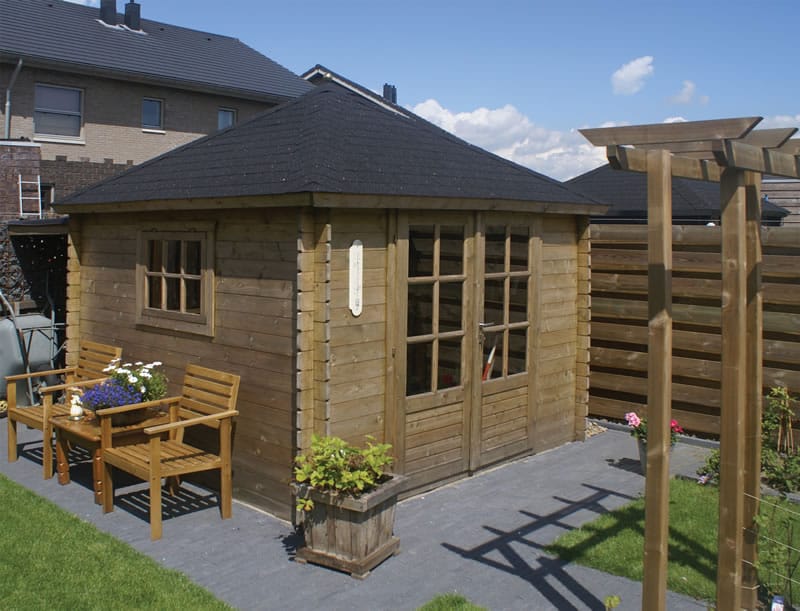
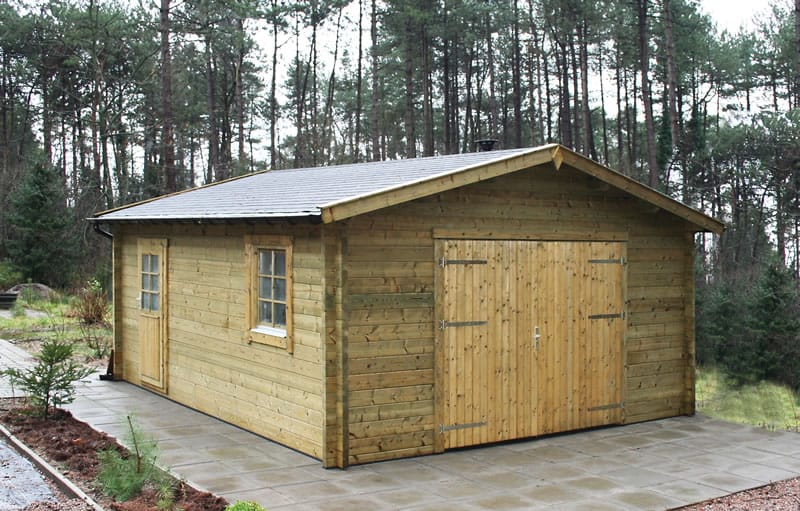
I would advise getting some sort of guarantee for the treatments as I have had ‘Pressure’ treated decking rot in under five years. NOT I HASEN TO ADD FROM THIS VERY REPUTABLE COMPANY.